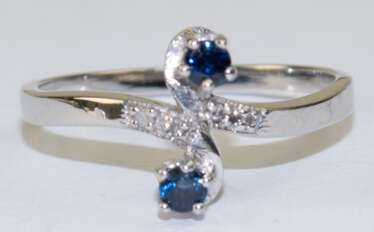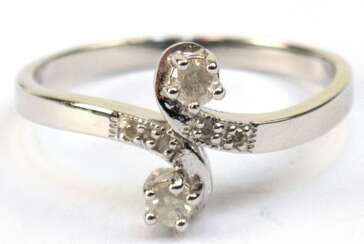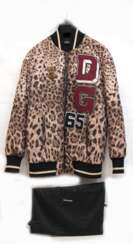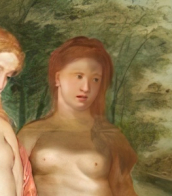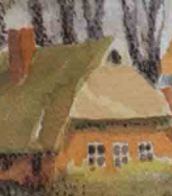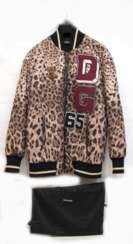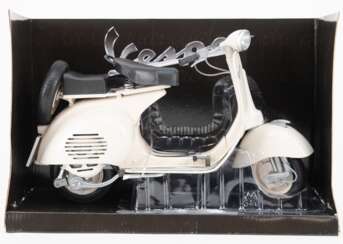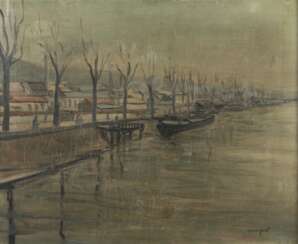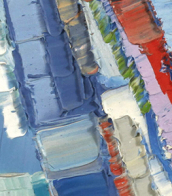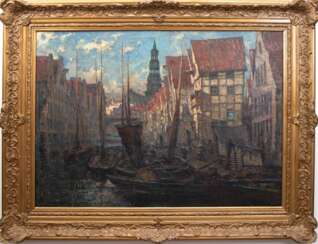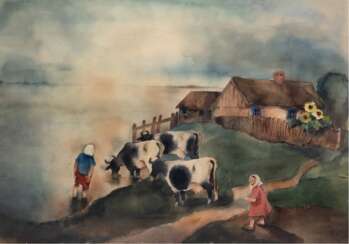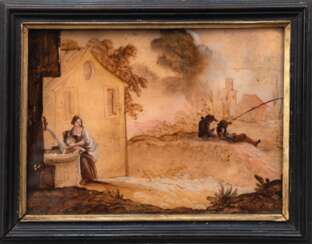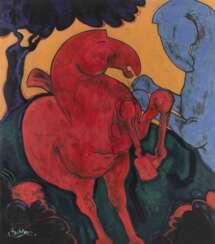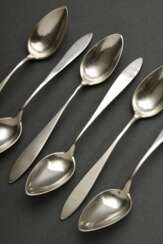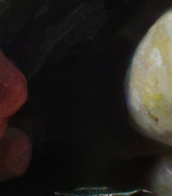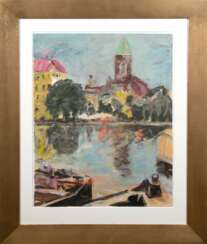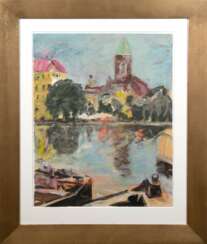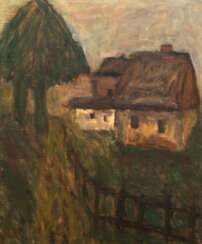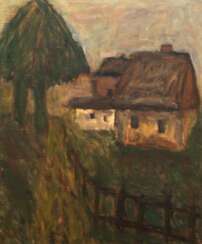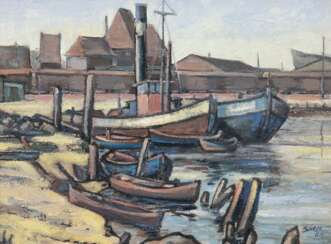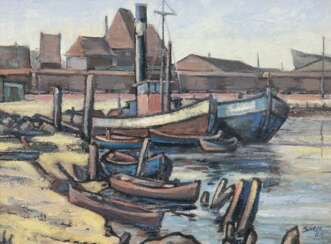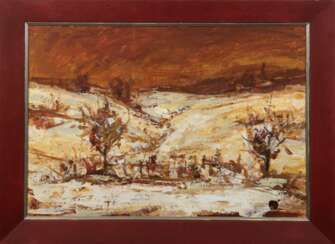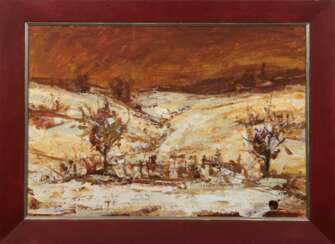Auction price
Lot 109 Graf, Gerhard (1883 Berlin-1958 Stockholm) "Hamburger Dovenfleet", Öl/ Lw., 1 Hinterlegung, sign. u.l., Gemälde war auf der Berliner Kunstausstellung 1914/ 15, 100x131 cm, Rahmen, (Er war ein deutscher …
Kunst und Antiquitäten 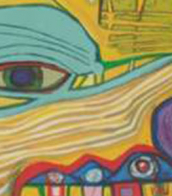 Auktionshaus Satow
Auktionshaus Satow

Auktionshaus Satow
Kunst und Antiquitäten
Date: 23.03.2024 11:00 UTC +02:00
Number of lots in the catalog: 1064
Lot 22 Hinterglasbild 18. Jh. "Südländische Landschaft mit Anglern und junger Frau beim Wasser holen", Goldgrundmalerei, undeutl. sign. u.r. "R. ..", 13x17,5 cm, Rahmen
Kunst und Antiquitäten  Auktionshaus Satow
Auktionshaus Satow

Auktionshaus Satow
Kunst und Antiquitäten
Date: 23.03.2024 11:00 UTC +02:00
Number of lots in the catalog: 1064
Lot 95 Fretwurst-Colberg, Antje (1940 Hamburg) "Küstenstadt mit Kirche", Aquarell, oben mittig "Porträt Friedrich Wilhelm Fretwurst", sign. u.r. und dat. ´90, 62x47,5 cm, im Passepartout hinter Glas und Rahmen (Studium an der Meisters…
Kunst und Antiquitäten 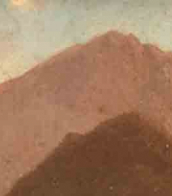 Auktionshaus Satow
Auktionshaus Satow

Auktionshaus Satow
Kunst und Antiquitäten
Date: 30.12.2023 11:00 UTC +02:00
Number of lots in the catalog: 930
Lot 221 Fretwurst-Colberg, Antje (1940 Hamburg) "Blick auf das Märkische Museum in Berlin", Aquarell, oben mittig "Porträt Friedrich Wilhelm Fretwurst", sign. u.r. und dat. ´90, 62x47,5 cm, im Passepartout hinter Glas und Rahmen (Studi…
Antje Fretwurst-Colberg (1940) 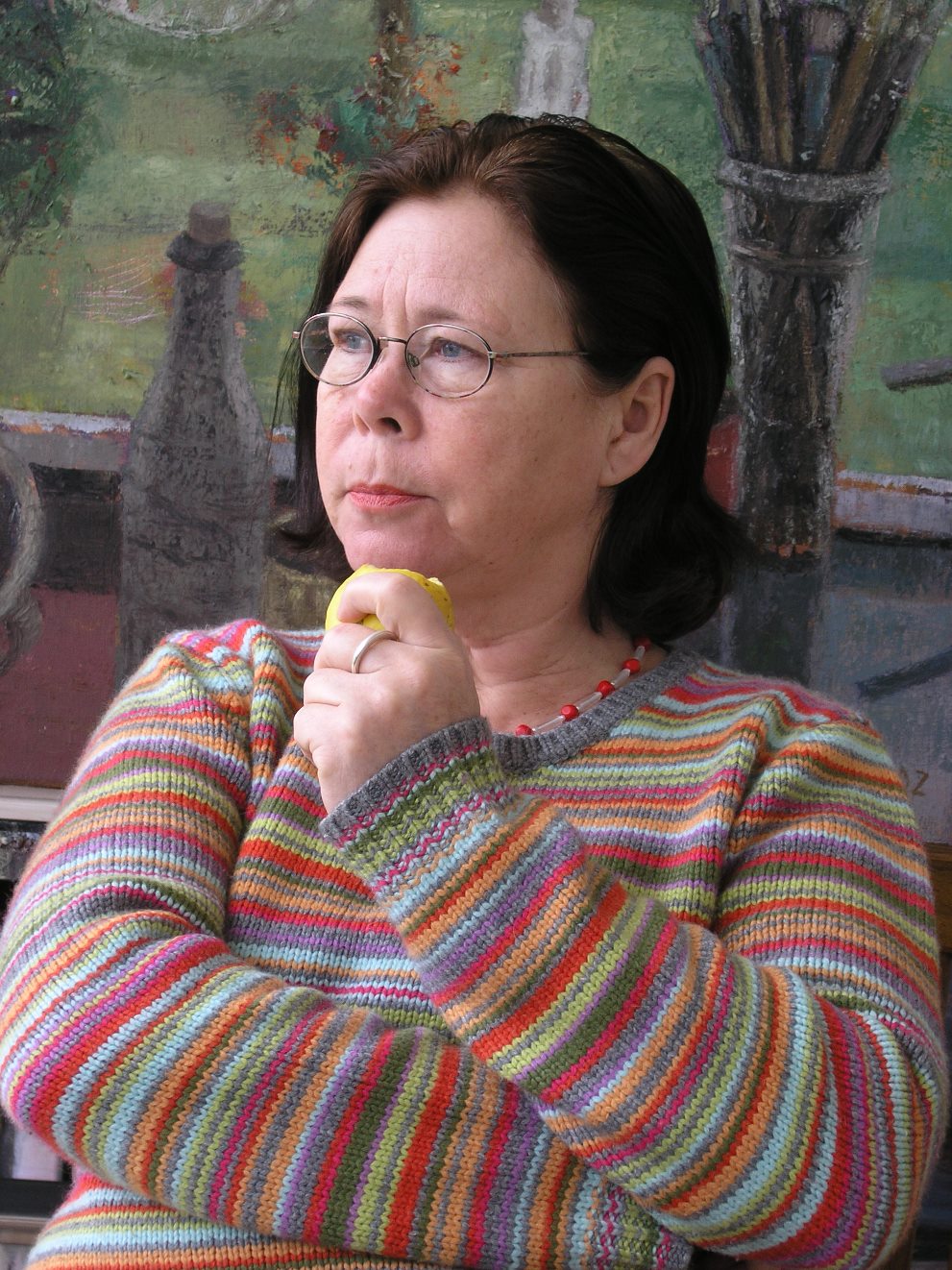 Kunst und Antiquitäten
Kunst und Antiquitäten 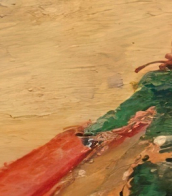 Auktionshaus Satow
Auktionshaus Satow

Antje Fretwurst-Colberg
05.05.1940

Auktionshaus Satow
Kunst und Antiquitäten
Date: 10.02.2024 11:00 UTC +02:00
Number of lots in the catalog: 845
Lot 223 Vent, Eva (1933 Passenheim/Masuren) "Bauernhof", Öl/ Lw., unsign. rückseitig bez. und dat. 1987, 79x63,5 cm, Rahmen
Eva Vent (1933) 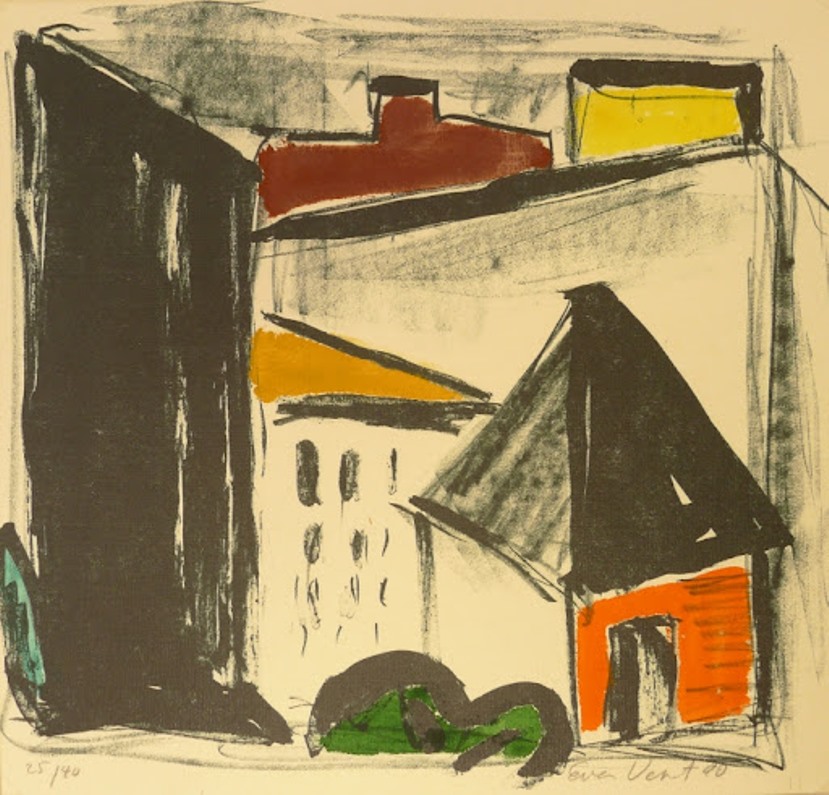 Kunst und Antiquitäten
Kunst und Antiquitäten  Auktionshaus Satow
Auktionshaus Satow

Eva Vent
13.12.1933

Auktionshaus Satow
Kunst und Antiquitäten
Date: 10.02.2024 11:00 UTC +02:00
Number of lots in the catalog: 845
Lot 216 Seese, Paul-Oskar (1927 Sternberg-2013 Parchim) "Wismarer Hafen um 1960", Öl/Mp., sign. u. dat. '60 u.r., rücks. bez., 29,5x40 cm, Rahmen
Paul-Oskar Seese (1927 - 2013) 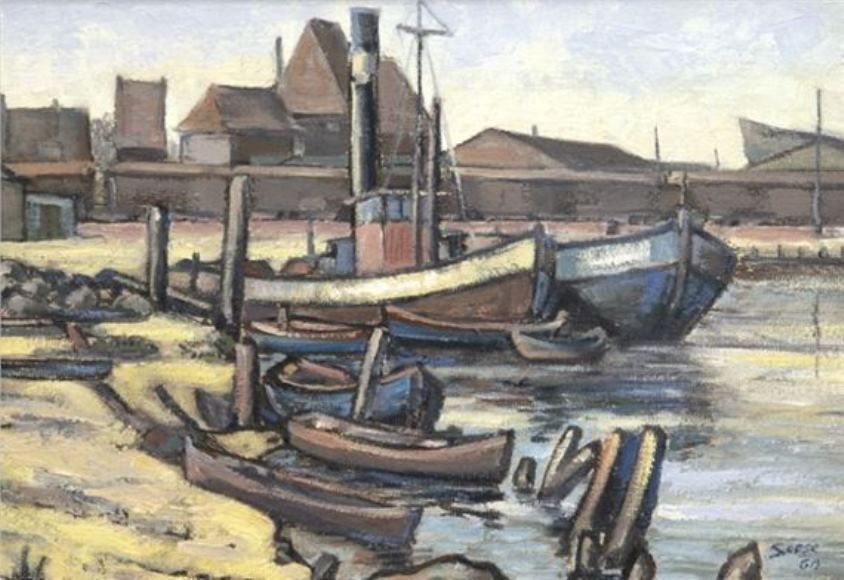 Kunst und Antiquitäten
Kunst und Antiquitäten  Auktionshaus Satow
Auktionshaus Satow

Paul-Oskar Seese
30.04.1927 - 06.11.2013

Auktionshaus Satow
Kunst und Antiquitäten
Date: 10.02.2024 11:00 UTC +02:00
Number of lots in the catalog: 845
